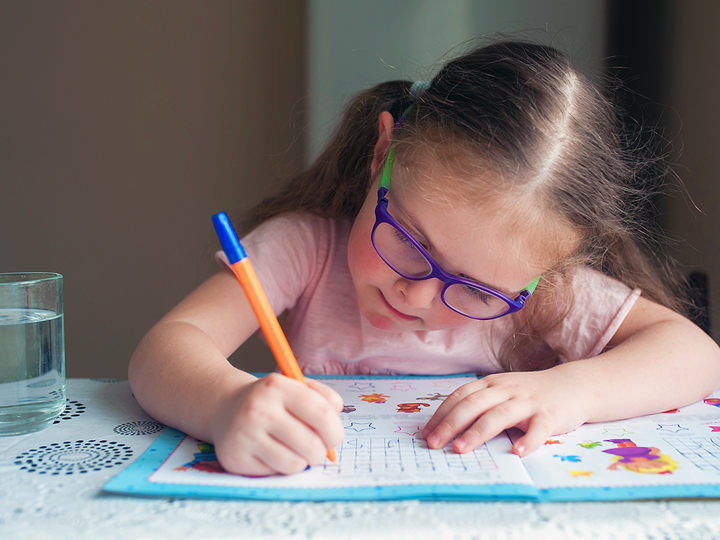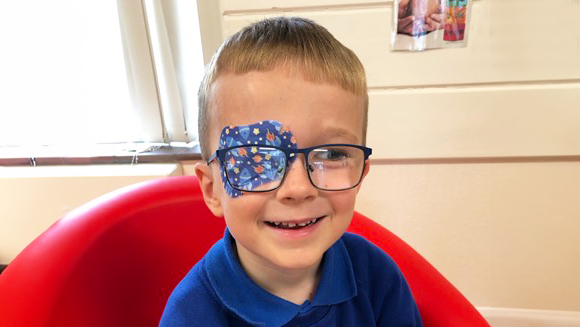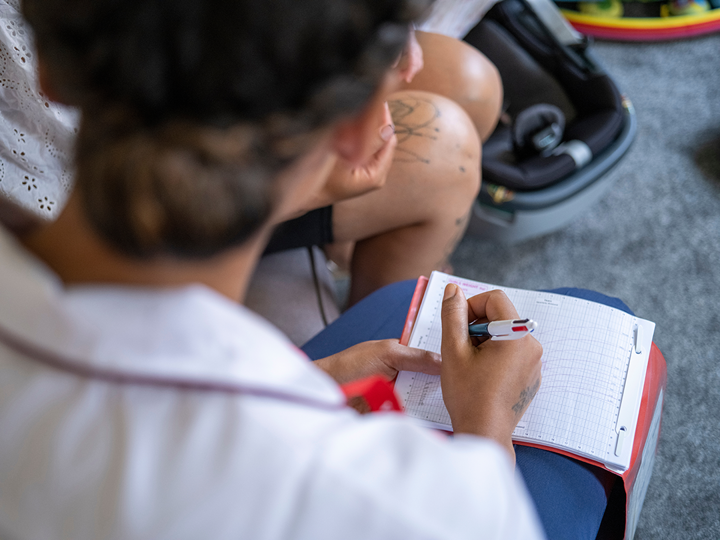Lazy eye

Lazy eye is also known as amblyopia. A lazy eye develops when there is poor vision in one or both eyes. The brain ignores information from the eye with poor vision. This is because it prefers to use the better eye.
It is important that a lazy eye is treated. Without treatment there can be permanent vision loss in their lazy eye.
Explore the topic on this page:
The differences between lazy eye and squint
Lazy eyes and squint can often be confused for each other but they are different.
Lazy eye is when one eye is stronger than the other. This means that the brain will only take information from the stronger eye. This just affects vision and can result in loss of vision in the eye if untreated. It does not cause the eye to turn in or out.
Squint is when one or both eyes do not align. The eyes can turn in or out. It can be caused by the muscles that control the eye. It can cause blurred vision, double vision or headaches..
Causes of a lazy eye
A lazy eye can occur when your child has:
- a squint or turned in eye
- long-sight or short-sight that is worse in one eye
- a drooping upper eyelid also known as ptosis
- a cataract
How lazy eyes are found
Lazy eyes are found during an eye test. The eye test may involve the optometrist putting eye drops in your child's eyes. These eye drops stop the eyes from focusing by dilating the pupil. This allows the optometrist to accurately check the health of your child's eyes. It will also help them see if your child needs glasses.
After this eye test, if your child needs glasses you will be given a prescription. Take the prescription to an optician. Read more about glasses. Your child will need to wear their glasses while they are awake.
Your child will need to come back to the see orthoptist after 3 to 4 months.
Treating a lazy eye
Lazy eyes are treated using patching or a patch treatment. This is when a eyepatch is placed over one of your child's eyes. By covering the stronger eye, it forces the weaker or lazy eye to work. This treatment is most effective when your child is 8 years old or younger.
The eye patch will need to be over your child's eye for a specific length of time during the day. This can be difficult to start with as your child will be seeing things with their worse eye.

Types of eye patches
There are many types of eye patch available for children. If your child does not like one type of patch, you can try another.
Adhesive patches - These patches look like plasters. They can be brightly coloured, patterned or beige. They stick directly onto your child's face. These can be decorated with coloured crayons or stickers. It can help the patch feel fun and special for your child.
Felt or fabric patches - These patches are similar to the adhesive ones expect they do not stick. These patches can only be used if your child wears glasses as they attach to the arm and nose pad of the glasses.
1% Atropine eye drops - These are special eye drops (a bit like the ones we use for the glasses and eye health check but longer lasting). The eye drops blur vision, we would use them in the stronger eye. It will make your child use their weaker eye to look with most of the time and this will improve the sight in the weaker eye. We usually use the drops 2 times a week but this can be varied depending on your child's vision.
When to use a patch
The best times to put an eyepatch on your child is just before doing an activity that requires vision.
Activities can include:
- craft activities like colouring, cutting and pasting
- using jigsaws and puzzles
- reading
- watching TV
- playing video games
Last reviewed: 1 November, 2024

